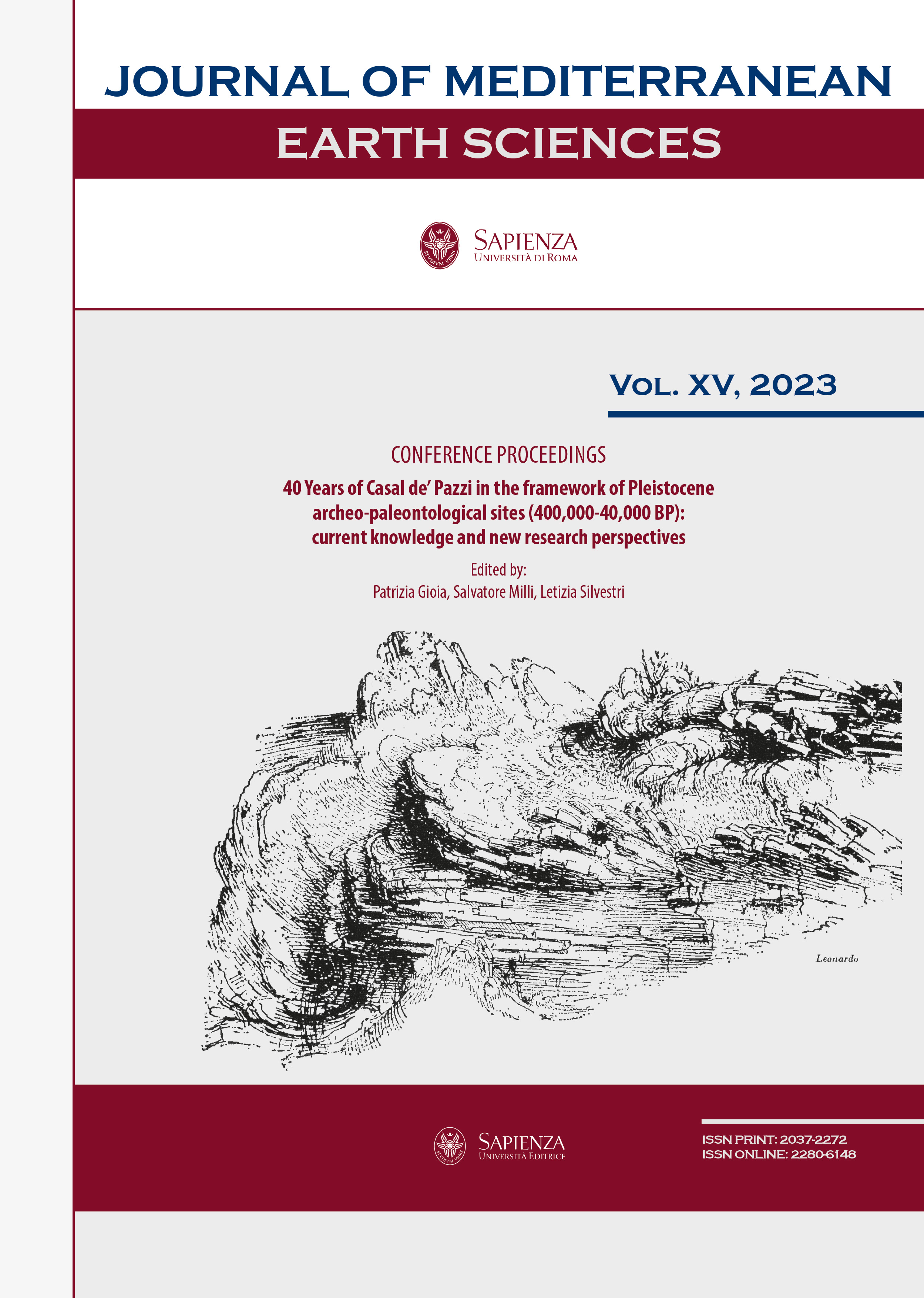Schöningen: a reference site for the Middle Pleistocene
DOI:
https://doi.org/10.13133/2280-6148/18154Abstract
Due to the exceptional preservation conditions, as well as the number and significance of the finds discovered, Schöningen in northern Germany stands out as a uniquely informative Middle Pleistocene site-complex. More than 20 archeological and 10 paleontological sites embedded in the shoreline sediments of a paleolake have preserved natural and anthropogenically modified wood, bones, and stones. A combination of data acquired from geological, stratigraphic, palynological, and faunal analysis, coupled with various direct dating methods, have indicated an age of ca. 300,000 years BP, corresponding to MIS 9. The lithic technology corresponds to the late Lower Paleolithic and is therefore consistent with these dates. This article gives an overview of the site-complex, of the most important discoveries at Schöningen, and describes the discovery of a nearly complete straight-tusked elephant skeleton (Palaeoloxodon antiquus) in an archeological context. Contextualized among contemporaneous archeological discoveries, the finds at Schöningen contribute significantly to our understanding of the late Lower Paleolithic in Europe.
Downloads
Published
How to Cite
License
The submission has not been previously published, nor is it before another journal for consideration (or an explanation has been provided in Comments to the Editor).


